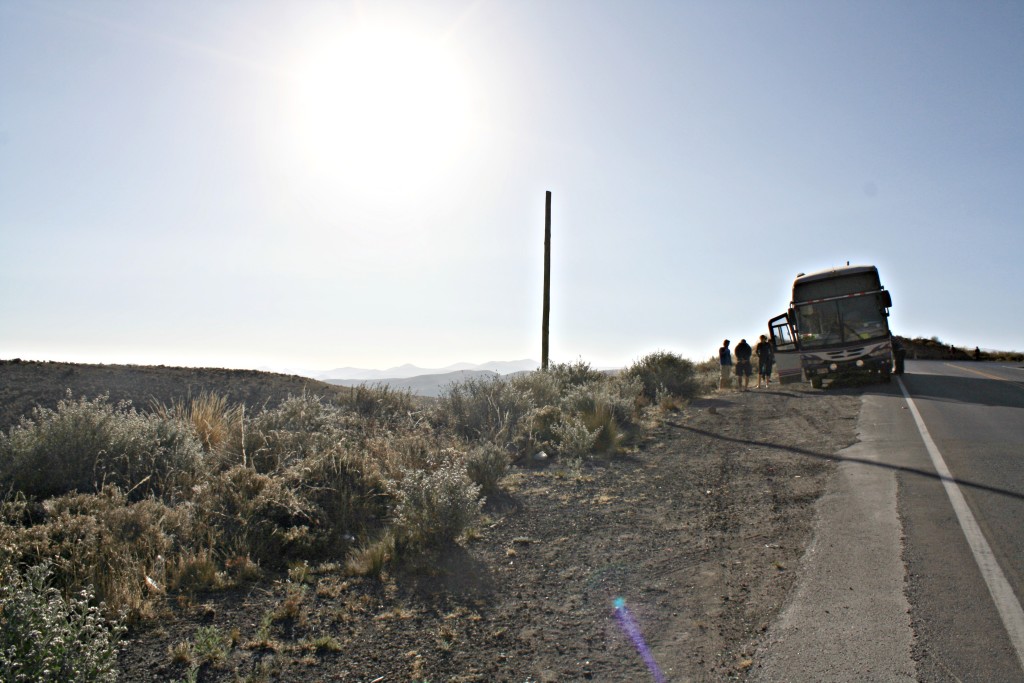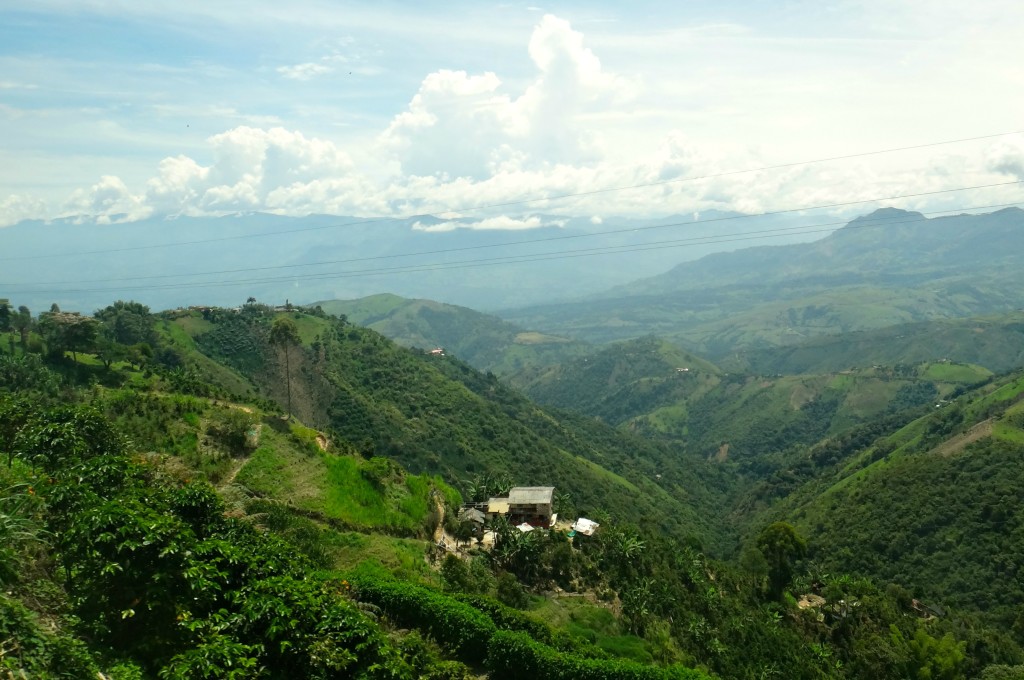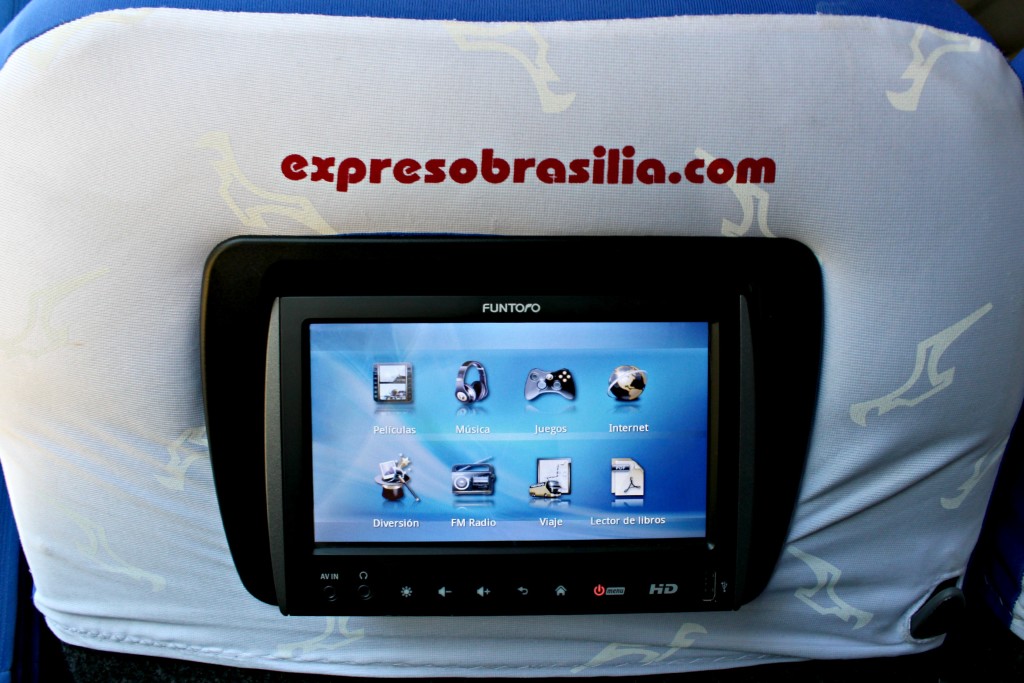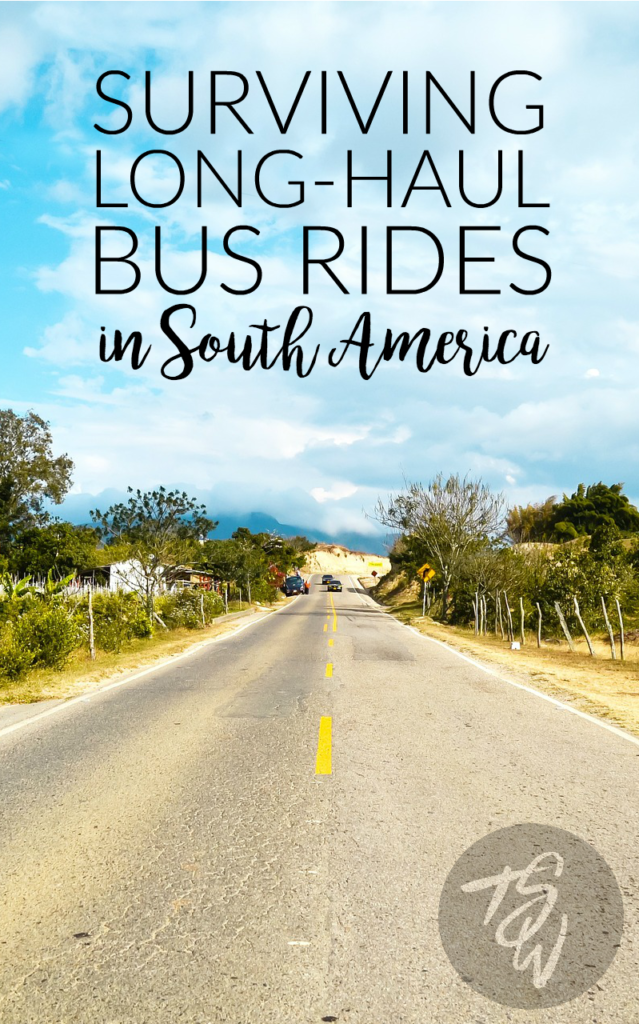Backpacking through South America presents some interesting challenges. Unlike other popular backpacking destinations like Europe or Southeast Asia, each country is rather sizable; getting between cities by air isn’t always an option on a backpacking budget, leaving many travelers to move about almost entirely by land.
By my calculations, I traveled approximately 21,017 kilometers (13,059 miles) by bus during my 8 months of travel across the continent last year and I’ve already tacked on a few thousand more since my return.
Bus rides between major cities in South America can often take well over ten hours. The good news is that most depart in the evening giving passengers a chance to sleep during the ride. This limits the number of daylight hours that are spent traveling rather than sightseeing as well, and saves you the cost of a night’s accommodation.
I won’t lie to you, though–these bus rides are not exactly what I’d call fun. It takes a talented individual to sleep well in an upright position, or to even remain in a seated for such long periods, sometimes up to 24 hours straight. Yes, you read that correctly–24 hours on a bus. The longest ride I’ve yet to endure was a full 24 hours between Caracas and Santa Elena de Uairén, Venezuela, though I’ve heard even longer routes do exist (between Peru and Brazil, for example).
So long as you know what you’re in for and show up to your bus well-prepared, however, you can minimize your suffering on these long-haul bus rides from hell. Here is the best hard-earned advice I can give you on how to do just that.
1. Beware the AC
I’m starting with this tip because I can’t tell you how many of my bus rides were absolutely miserable simply because I underestimated just how powerful the air conditioning would be. You know how airports and flights are always ridiculously cold no matter how hot (or cold) it is outside? These buses are no different. Pack clothes that can be layered on thick when the arctic winds begin to blow, wear long pants, real shoes with socks, or even better yet, bring a blanket or sleeping bag on board with you. Some buses will even offer you a blanket; take this as a sign of what’s to come and for the love of all things holy, TAKE IT. If you’re anything like me, being uncomfortably cold means there’s no chance you’ll get a good night’s sleep (or any sleep at all, for that matter) and there’s nothing worse than arriving to your destination only to pass out from exhaustion first thing.
2. Keep everything of value in your carry-on
Your large bag (backpack or suitcase) will be transported underneath the bus, away from your watchful eye. Don’t leave anything in that bag that someone might want to steal, and I mean nothing. You should be locking your luggage when you travel anyway, but even still, there’d be nothing stopping someone from slashing into your bag with a knife if they really wanted to. Keep all electronics, cash, credit cards and your passport on your person or in your carry-on bag (preferably also locked) and store it underneath your feet, never on the overhead shelf.
3. Don’t expect to arrive on schedule
As a good rule of thumb, add at least one hour to the estimated time of your trip. Sixteen hours is never really sixteen hours, sometimes eight hours turns into eleven, and sometimes fourteen turns into twenty. Even if your bus doesn’t blow a tire or get stuck behind a truck that’s falling off a bridge (true story), the time the agent tells you is almost always overly optimistic. 
4. Bring snacks and water
Chances are the bus will make a number of pit stops en route to your destination to let people buy dinner and breakfast and for bathroom and stretch breaks, but there’s no way of knowing exactly when those pit stops will be or what kind of food options will be available. When the bus company does provide a snack (as some VIP buses do) expect it to be carb-heavy and nutrient-poor; if you suspect you’ll want something a little healthier, it’s best to just bring your own.
5. Keep a stash of toiletries handy
Many buses have a bathroom on board, but often they are without toilet paper or a way to properly wash your hands. The same is true for the bathroom stops along the way. For this reason, it’s a good idea to have your own little stash of toilet paper and hand sanitizer. In my experience, it’s always better to be safe than disgusting sorry. And when you’re nearing your destination in the morning, you’ll feel instantly refreshed if you’re able to pop into the bathroom and brush your teeth, cleanse your face with a moist wipe, or even apply a spot of makeup.
6. Invest in an eye mask and earplugs
Many buses will be equipped with entertainment systems as well, though an unfortunate trend I saw repeated over and over again in South America was the preference to play violent movies (Death Race 3, anyone?) at incredibly high volume late into the night. The glow of the TVs is blinding and the sound effects can be deafening–defend yourself against both if you have any hope of sleeping before midnight.
7. Charge up all your electronics before your trip
There’s nothing more disappointing than getting on a long bus ride only to find that your iPod/iPhone/Kindle is just minutes away from powering down. You may even want your camera handy, as the scenery along the way can be pretty spectacular. Make charging your electronics a part of your pre-bus checklist so they’ll be ready for that moment when you just don’t feel like chatting with your lovely seat mate anymore.
8. Don’t be afraid to upgrade
Many bus companies will offer multiple seating options. The cheapest option will be your average bus seat. A slightly more expensive seat is what’s known as “semi-cama” (cama meaning bed in Spanish) which means you’ll be able to recline slightly more and have a place to rest your feet. The best and most expensive option is called “full cama” and allows you to recline to a respectably comfortable position, almost as if you were lying in a bed. These seats are often much wider as well and will definitely give you the best chance of sleeping; as an added bonus, you may just end up with a personal entertainment system and free WiFi on board. In my opinion, there’s no shame in upgrading to a pricier seat if it could potentially save you a lot of very real physical pain.
9. Research flight prices before you choose to bus
You may just find that when traveling within a country, domestic flights are not actually outrageously expensive. Here in Colombia, the airline Viva Colombia offers flights that are often less than $100 one-way (I’ve heard of people booking for as little as $60) which is often comparable to the price of a bus ticket or only slightly more expensive. If you’re time-poor especially, this could be the way to go. In Bolivia I was able to find a flight between Santa Cruz and Sucre for around $50; sure, a bus would have only cost me about $20, but in the end I saved myself more than 10 hours of travel and a whole lot of hassle.
Have you been on overnight bus rides in South America? What’s your best advice for long-haul bus travel?




